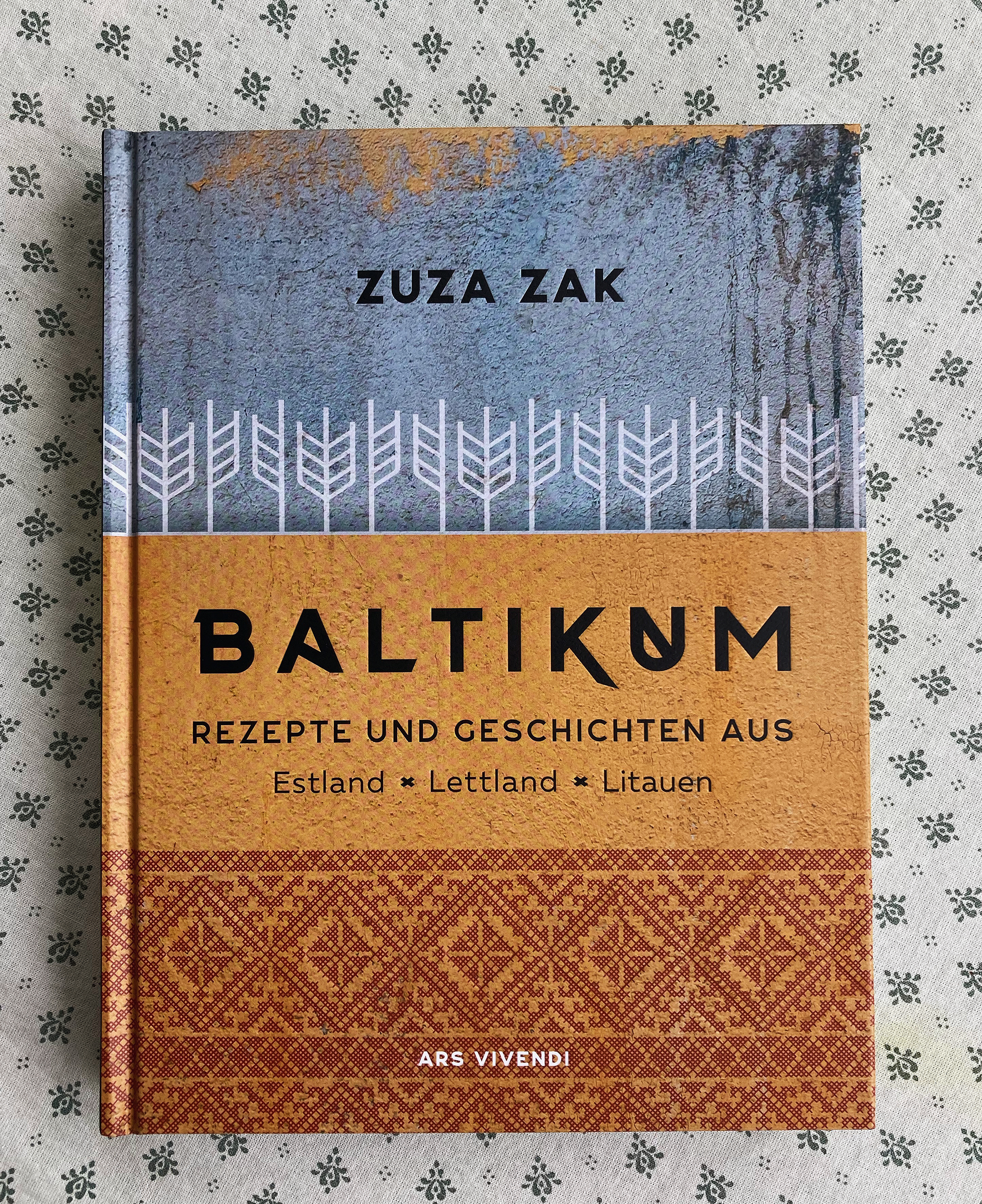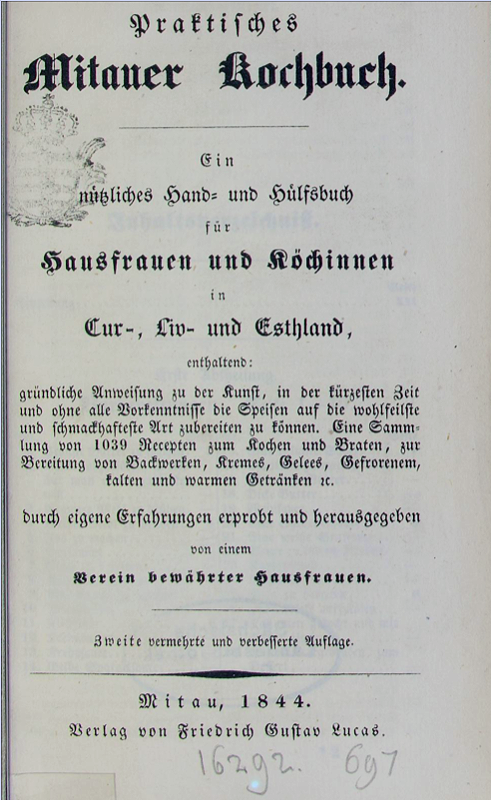Cookbooks from the Baltic countries from 1844 to the present day
“Praktisches Mitauer Kochbuch” (Practical Mitau cookbook) published 1844
Published by Friedrich Gustav Lucas, Mitau 1844
Copyright expired, therefore available online.
without ISBN number, online version with 332 pages, no illustrations
set in old German script.
File size approx. 90 MB
The cover text states:
“A useful handbook for housewives and cooks in Courland, Livonia and Estonia, containing thorough instructions on the art of preparing food in the tastiest way. A collection of 1404 recipes for cooking and roasting, for the preparation of baked goods, creams, … Tried and tested by an association of experienced housewives.”
Very good to use as a digital version, today’s generation will not know and understand all the common technical terms from the Baltic States.
Some typical expressions are explained for today’s understanding:
E.g. gestowt oder gestovt = geschmort, gedünstet (stewed, steamed)
stoven = preparation of vegetables, mushrooms or fish etc. in a sauce thickened with flour
Grapen = Cast iron kettle, roasting pot, roasting pan etc.
Baltisches Kochbuch (Baltic cookbook) by Brigitte von Samson-Himmelstjerna
Publisher Harro v. Hirschheydt, Hannover
186 pages, without illustrations
out of stock, no ISBN
One of the classic cookbooks that I would recommend to anyone who wants to learn about Baltic cuisine. With one small limitation, as this cookbook was probably originally written in the first half of the last century. The author also refers to other Baltic cookbooks from 1876 to 1922 in the introduction, so the portions are designed for large families (serving 5-6 people) and various terms and ingredients can certainly be creatively replaced by newer products and preparations. It is also interesting to note that saffron was already available for the “Kringel” (type of pastry) back then. „Schmand” (in Baltic Schmant) can also be easily replaced with cream. For me, this cookbook for Baltic recipes was a nice guide for many dishes.
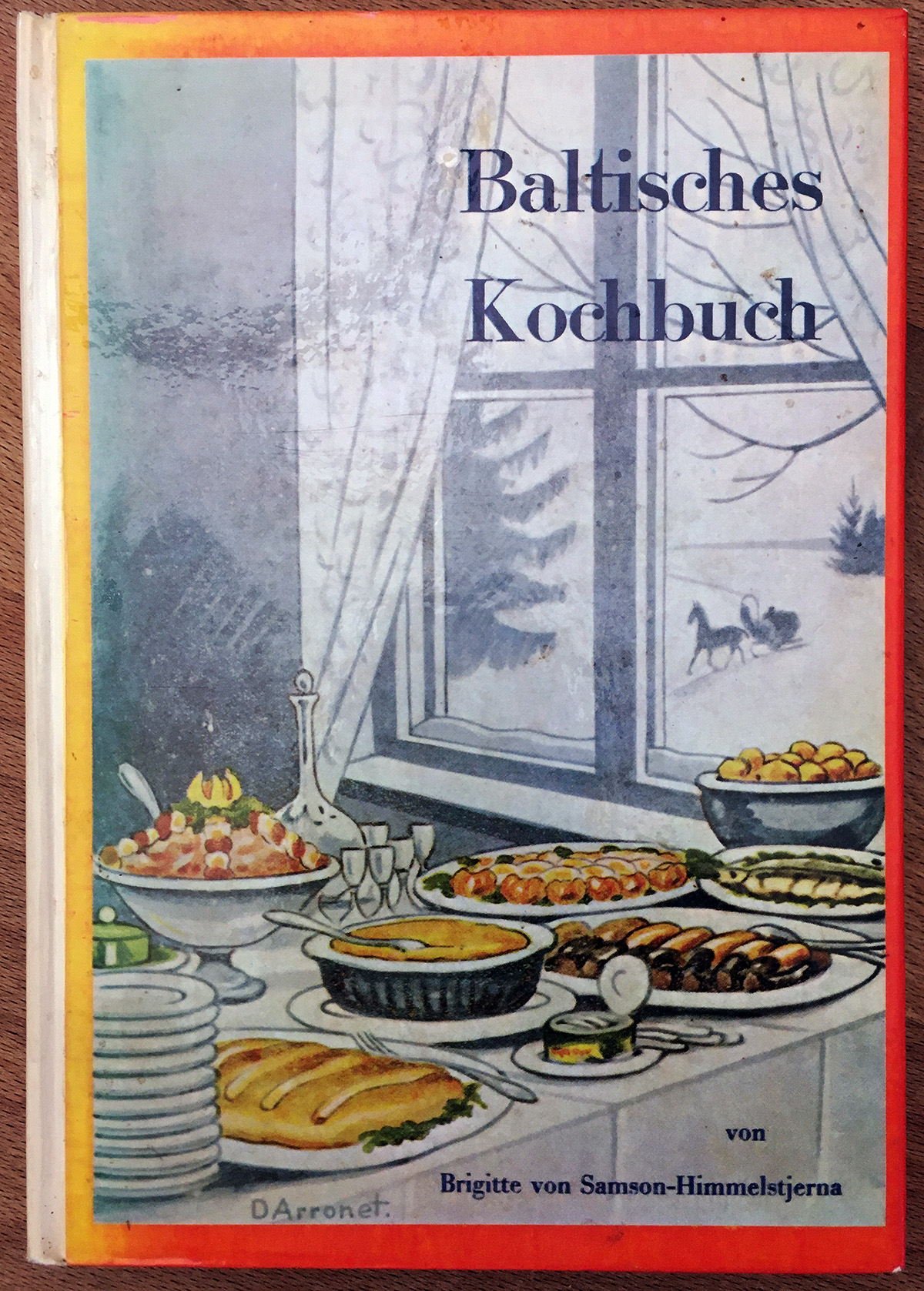
Rigasches Kochbuch (Riga cookbook), no author
Published by R. Kymmel, Riga, 1880, Reprint of the original edition
Hinstorff Verlag GmbH, Rostock 1995
264 pages without illustrations, typeset in old German script.
ISBN: 3-356-00633-9
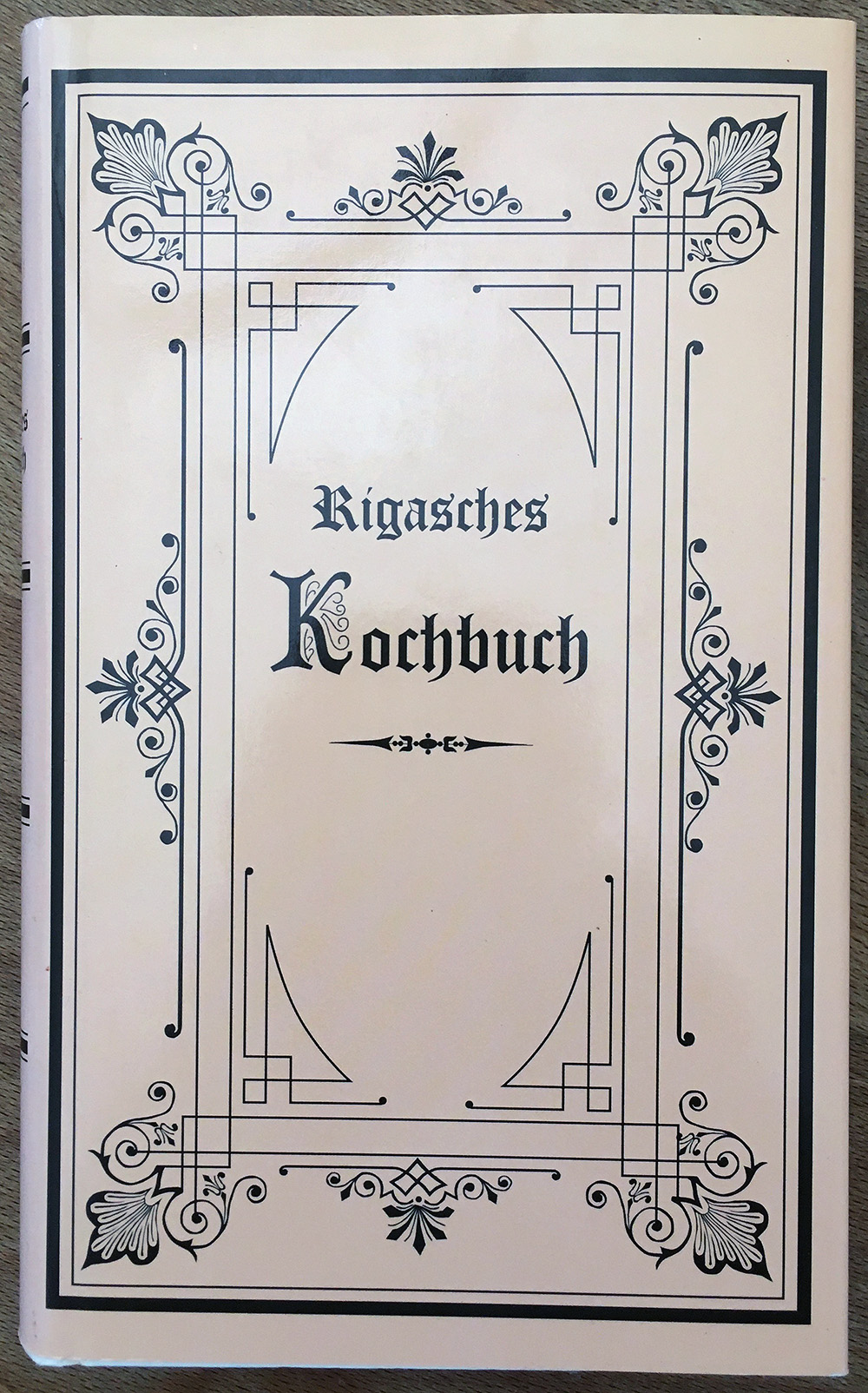
Baltisch kochen (Baltic cooking)
Gerichte und ihre Geschichte (Dishes and their history)
Publisher “Die Werkstatt von Anne Iburg”, Edition dia
224 pages, several pages with colour illustrations.
ISBN: 978-3-89533-607-2
Since joining the European Union, Latvia, Lithuania and Estonia have enjoyed great popularity among art, culture and nature lovers. Enthusiasts also love the natural cuisine, which has hardly been described so far.
Anne Iburg introduces you to the culinary history of the Baltic region, where a rich tradition is cultivated. In addition to traditional dishes for Christmas, Easter and Midsummer, the local cuisine is characterised by savoury dishes. Estonians love rossolye (pickled herring) or their speciality hapukapsasupp (sauerkraut soup), Latvians love zirni ar speki (peas with bacon) and their salads, and Lithuanians love their cold soups or cepelinai (potato dumplings filled with minced meat). In all three countries, berries, apples and pears are used to make delicious cakes and desserts such as caramelised black bread with cranberry jam and whipped cream. And of course, the Balts have mastered the art of brewing beer – their national drink – just as well as distilling vodka.
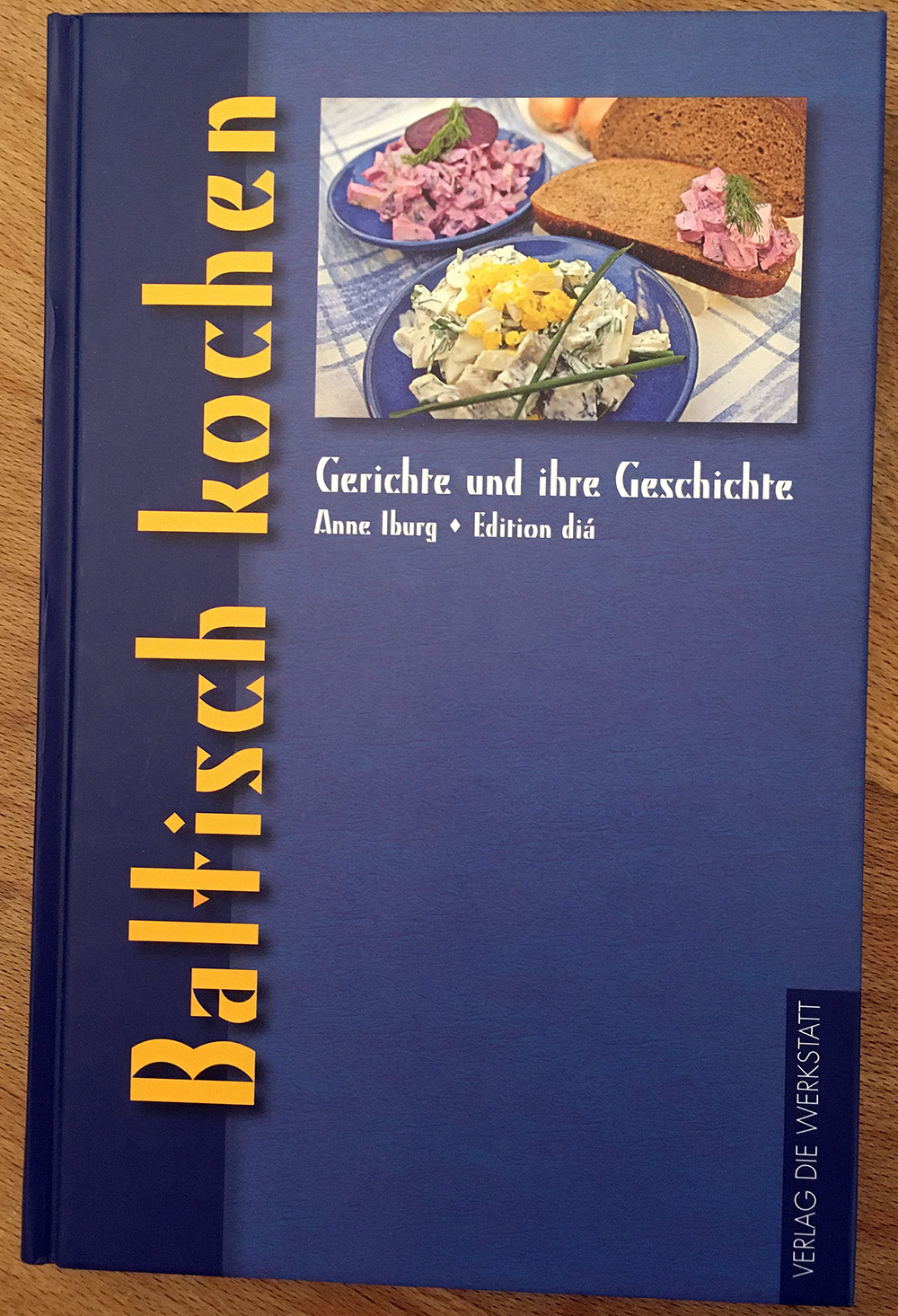
“Barbara Bielensteins Baltisches Kochbüchlein” (Barbara Bielenstein’s Baltic Cookbook)
Publischer: Neuthor Verlag Michelstadt, 1983
37 recipes, without page numbers, no illustrations
ISBN: 978-3-88758-012-5
available for €5 from Jochen Bosse, Im Fürstenauer Forst 13a,
64720 Michelstadt, Phone: +49 151-26155243
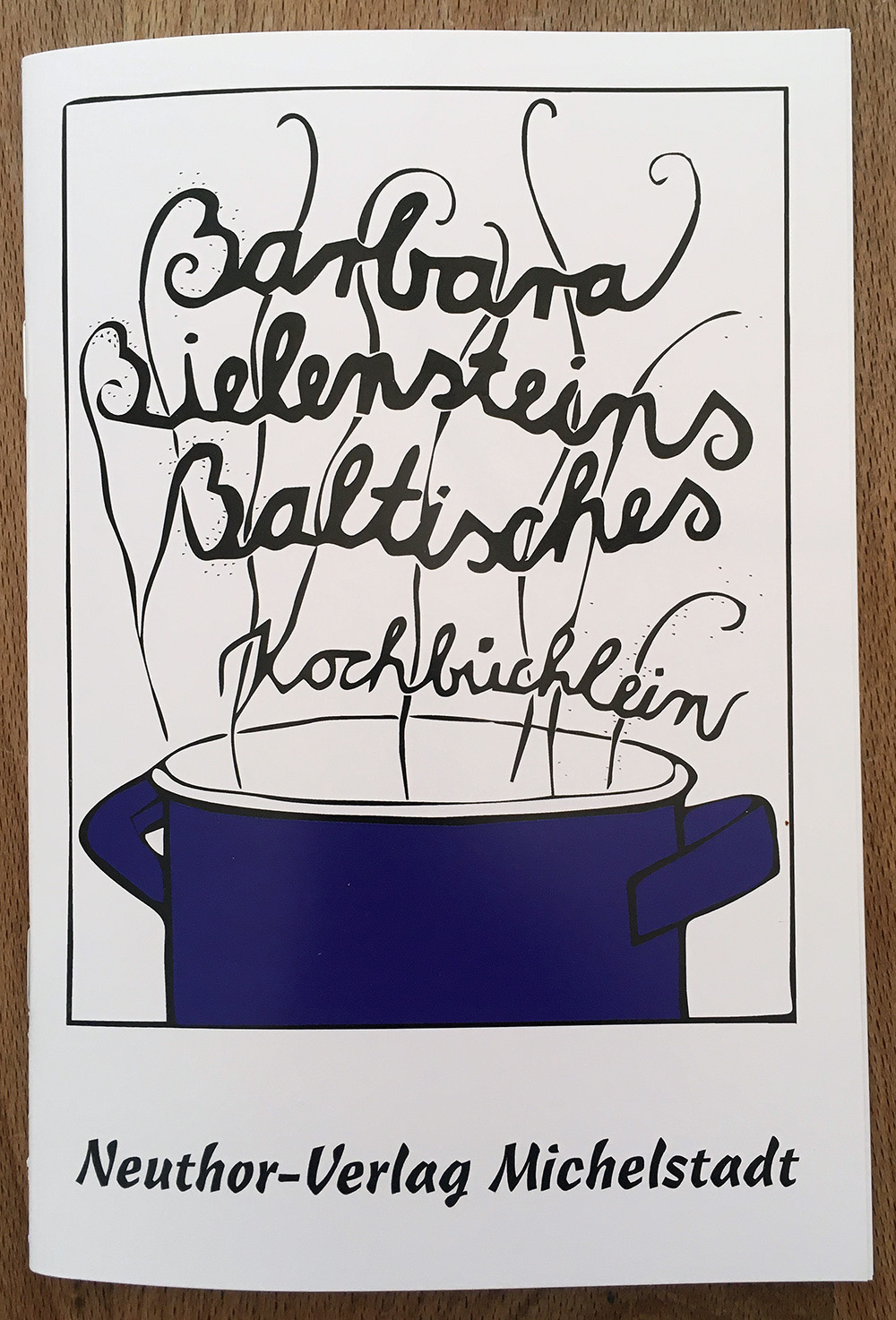
Die baltische Küche (The baltic cuisine)
by Simon Bajada
Publisher: Dorling Kindersley Verlag GmbH München
222 pages with numerous coloured illustrations.
ISBN: 978-3-8310-3952-4
The title “Die baltische Küche” (The Baltic Cuisine) naturally caught my attention immediately after I first held this title in my hands in a Berlin bookshop. Back in Munich, I went straight to one of my favourite bookshops and was able to find it on the sales counter and take it home with me. The author, Simon Bajada, is a photographer from Sweden who lives in Stockholm and probably works on projects all over the world. The subtitle says: A culinary journey through Estonia, Latvia and Lithuania. This would make it a little clearer that it is about today’s cuisine in the Baltic states and not really about Baltic cuisine. According to the understanding of us Baltic Germans, who are probably the German descendants of the Teutonic Knights, the German population in the Baltic states, it is more about the cuisine of today’s population of the Baltic states in Estonia, Latvia and Lithuania. A closer look at the various recipes also reveals that very few of them have anything to do with the “old” classic Baltic recipes. Of course, a whole range of products grown in the Baltic states today are used in the recipes, but the classic reference to traditional Baltic cuisine is only marginally present.
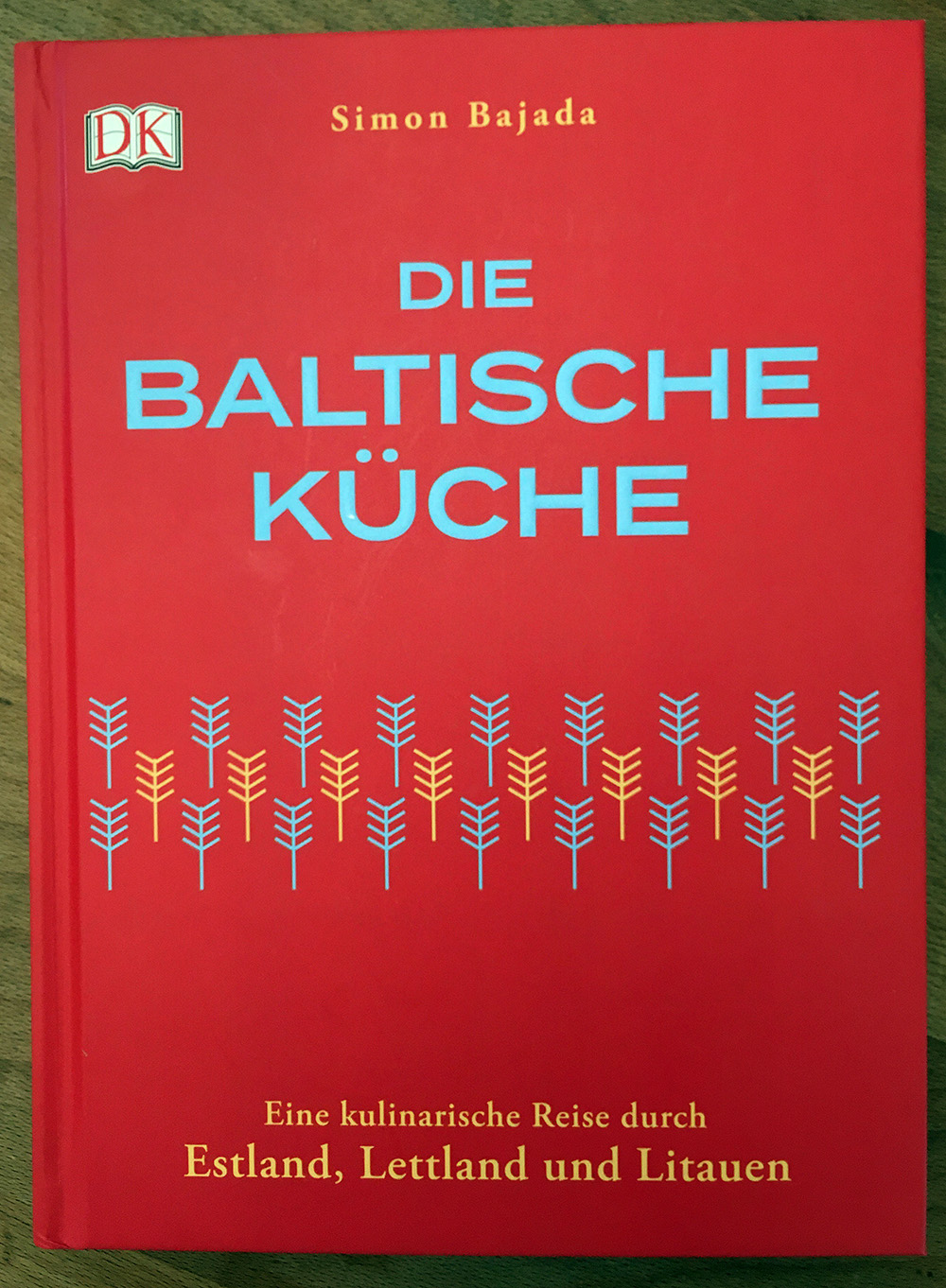
Baltikum (The Baltics)
Rezepte und Geschichten aus Estland – Lettland – Litauen (Recipes and stories from Estonia – Latvia – Lithuania)
by Zuza Zak
Publisher: Ars Vivendi Verlag GmbH & Co. KG, Cadolzburg 2022
259 pages with numerous coloured illustrations.
ISBN: 978-3-7472-0348-4
There are 8 chapters on Baltic cuisine with a modern twist. The author is originally from Poland and then lived in Great Britain for a long time. Five major Baltic cities are described, which makes up the narrative part.
To help you find your way around the recipes, almost all the texts state whether the preparation is vegetarian, vegan, or pescatarian. What you should not expect here, however, are the German-Baltic terms, preparation, or other parallels to German culture in the Baltic states.
